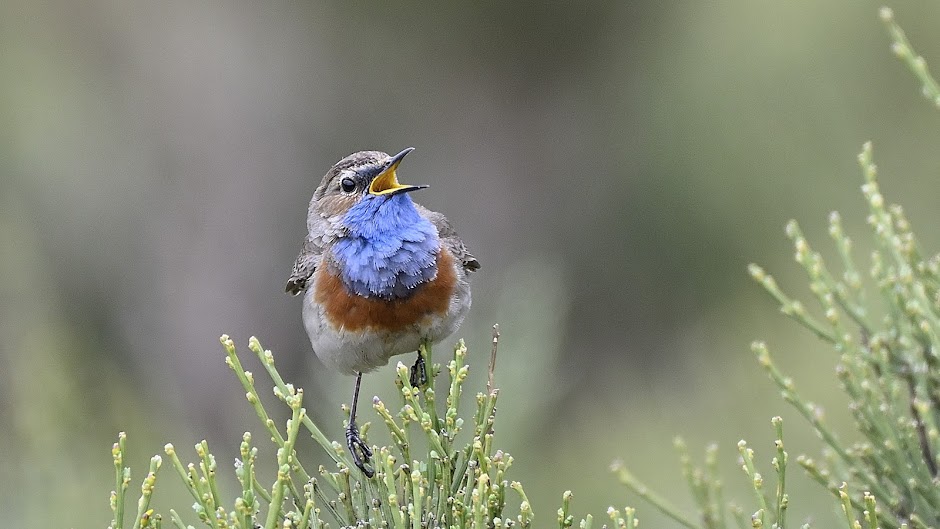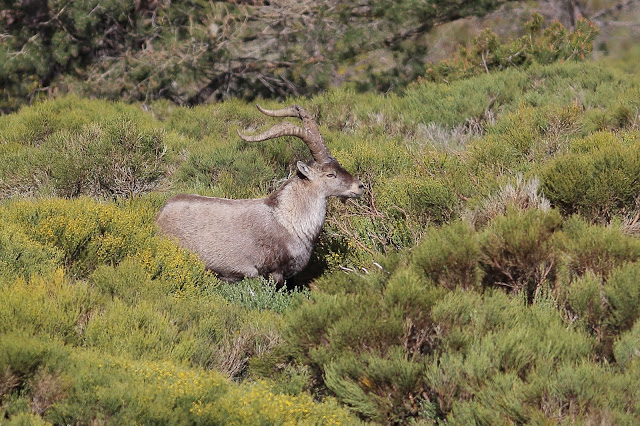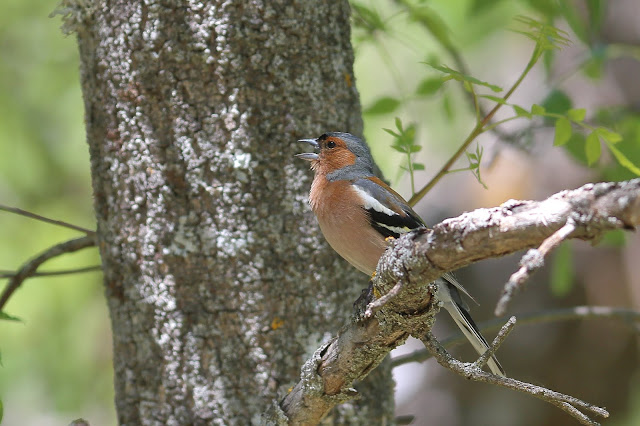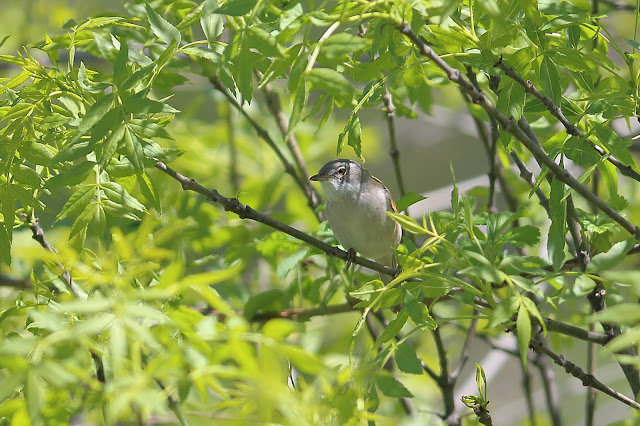Hola una vez más.
Hi again.
Hi again.
En el siguiente enlace podéis ver nuestros próximos viajes fotográficos y de observación de aves y mamíferos nacionales y al extranjero. Espero que os gusten y os animéis a venir conmigo. Una experiencia que nunca olvidareis. Estos viajes están condicionados a la situación en que se encuentren los destinos con respecto a la pandemia del coronavirus.
In the following link you can see our next national and foreign Birds and Mammals photographic and observation trips. I hope you like them and I encourage you to come with me. An experience that you will not forget. These trips are conditioned to the situation in which the destinations are with respect to the coronavirus pandemic.
Esta entrada es de una visita privada para dos personas el 20 de mayo al Parque Nacional Sierra de Guadarrama. Con la llegada del calor es mejor acudir a pajarear a los lugares un poco más frescos. Además en las partes altas de la sierra se pueden ver aves que no se ven en los llanos o estepas.
This post is of a private visit for two people on May 20 to the Sierra de Guadarrama National Park. With the arrival of high temperaturesheats it is better to go to birding in a little cooler places. In addition, in the higher parts of the mountains you can see Birds that are not seen in the plains or steppes.
El tiempo fue bueno y soleado y sin calor.
Weather was good and sunny and not hot.
Weather was good and sunny and not hot.
Nada mas llegar a nuestro punto de partida de la excursión, vimos a un grupo de pardillos comunes (Linaria
cannabina). En la foto un macho.
As soon as we arrived at our starting point of the trip, we saw a group of Common Linnet. In the photo a male.
No muy lejos de ellos había un bisbita campestre (Anthus
campestris).
Not far from them there was a Tawny
Pipit.
Solo pudimos observar una pareja de gorriones chillones (Petronia
petronia).
We were only able to spot a pair of Rock Sparrow.
La especie más abundante eran los acentores comunes (Prunella
modularis).
The most abundant species were the Dunnock.
Siempre me llama la atención que las garras sean más oscuras que el tarso.
It always strikes me that the claws are darker than the tarsus.
Un macho de tarabilla europea (Saxicola rubicola).
A Common
Stonechat male.
Los bonitos escribanos hortelanos (Emberiza
hortulana) estaban muy activos cantando.
The pretty Ortolan Bunting were very active singing.
Escribano montesino (Emberiza
cia).
Rock Bunting.
Vimos 4 machos de cabra montés (Capra pyrenaica). Este era el que tenía los cuernos más grandes.
We saw 4 male Spanish Ibex. This was the one with the largest horns.
Bonito ejemplar.
Nice specimen.
También vimos varias pareas de collalba gris (Oenanthe
oenanthe). En la foto un bonito macho.
We also saw several pairs of Northern
Wheatear. In the photo a nice male.
Hembra.
Female.
Otro bisbita campestre (Anthus
campestris).
Another Tawny
Pipit.
Las alondras totovía (Lullula
arborea) no paraban de cantar en vuelo. Pocas se posaron cerca nuestro.
Wood Lark did not stop singing in flight. Few landed close to us.
Solo vimos una alondra común (Alauda
arvensis).
We only saw a Eurasian Skylark.
Y ante de abandonar la más zona alta del Parque tuvimos la suerte de volver a ver muy cerca un macho de escribano hortelano (Emberiza
hortulana).
And before leaving the highest area of the Park we were lucky enough to see a male Ortolan Bunting again very close.
Después, fuimos al Valle del Lozoya a intentar localizar a los esquivos mirlos acuáticos europeos (Cinclus cinclus). A pesar de mucha insistencia para localizarlos no hubo suerte pero vimos otras aves que también nos gustaron mucho. Esta foto es de otra vez que había ido a los mismos lugares que visitamos.
Afterwards, we went to the Lozoya Valley to try to locate the elusive White-throated Dipper. Despite much insistence to spot them there was no luck but we saw other Birds that we also liked a lot.
Un reyezuelo listado (Regulus ignicapilla).
A Firecrest.
Mosquitero papialbo (Phylloscopus
bonelli). Había muchos pero ninguno quiso ser retratado decentemente.
Western
Bonelli's Warbler. There were many but none wanted to be well photographed.
Lavandera cascadeña (Motacilla
cinerea).
Grey Wagtail.
Un macho de pinzón vulgar (Fringilla
coelebs).
A Common
Chaffinch male.
Otro.
Another one.
Curruca zarcera (Sylvia communis).
Common
Whitethroat.
Y en este caso se trata de una curruca mosquitera (Sylvia
borin).
And in this case it is a Garden
Warbler.
Vimos varios arrendajos euroasiáticos (Garrulus
glandarius).
We saw several Eurasian Jays.
Había muchos sapos comunes (Bufo spinosus) y muchos de esta guisa.
There were many common toads.
Cuando regresábamos a la furgoneta, en el río Lozoya había muchas truchas intentando remontar las presas. Hice este vídeo con el teléfono móvil pues me pareció muy bonito contemplar los saltos que estaban dando. Solo las más grandes lo conseguían.
When were returning to the van, in the Lozoya River there were many Trout trying to climb dams. I made this video with my cell phone because I thought it was very nice to see the jumps they were taking. Only the biggest ones got it.
Si queréis suscribiros a este blog de los viajes que hacemos pincha en el siguiente enlace: Suscribirse y haz clic en ¿ Quieres suscribirte a nuestro blog?
If you want to subscribe to this post about the trips we do, click on the following link: Susbcribe and click on: Do you want to subscribe to our blog?
Espero que os haya gustado y hasta pronto.
I hope you like it and see you soon.
















































Este comentario ha sido eliminado por un administrador del blog.
ResponderEliminar